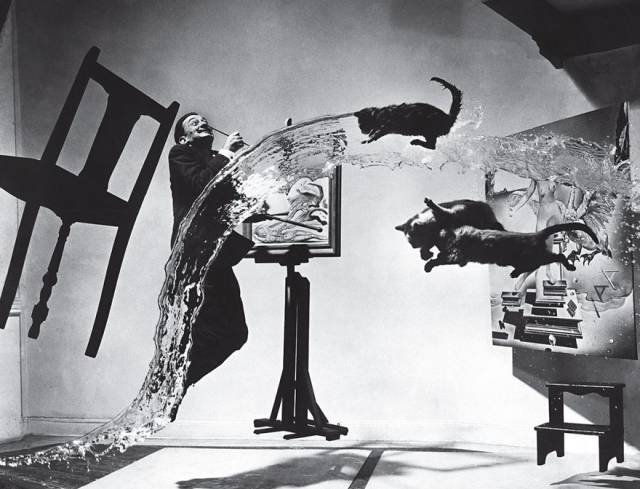Dalí Atomicus, Philippe Halsman, 1948 Capturing the essence of those he photographed was Philippe Halsman’s life’s work. So when Halsman set out to shoot his friend and longtime collaborator the Surrealist painter Salvador Dalí, he knew a simple seated portrait would not suffice. Inspired by Dalí’s painting Leda Atomica, Halsman created an elaborate scene to surround the artist that included the original work, a floating chair and an in-progress easel suspended by thin wires. Assistants, including Halsman’s wife and young daughter Irene, stood out of the frame and, on the photographer’s count, threw three cats and a bucket of water into the air while Dalí leaped up. It took the assembled cast 26 takes to capture a composition that satisfied Halsman. And no wonder. The final result, published in LIFE, evokes Dalí’s own work. The artist even painted an image directly onto the print before publication. Before Halsman, portrait photography was often stilted and softly blurred, with a clear sense of detachment between the photographer and the subject. Halsman’s approach, to bring subjects such as Albert Einstein, Marilyn Monroe and Alfred Hitchcock into sharp focus as they moved before the camera, redefined portrait photography and inspired generations of photographers to collaborate with their subjects.
